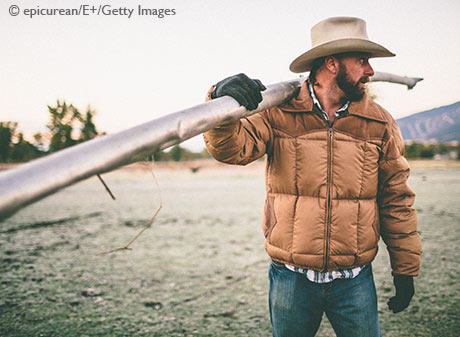The Challenges and Promises of Rural America

The day after November’s midterm elections, I traveled from urban St. Louis to rural southwest Minnesota to give a talk about the growing economic divide in America. Scanning the headlines that morning, it appeared that I had traversed a political divide as well:
- Urban voters had overwhelmingly chosen Democrats.
- Rural voters had overwhelmingly chosen Republicans.
Yet, the divide most worrisome to the 450 people attending the “Grow Our Own Summit” in Marshall, Minn., was who stays and who leaves. The area—like so many other rural areas across the country—is facing the challenges of attracting and retaining a skilled workforce. For example, one of every six kids in the area live in poverty.
Rural Talent Challenges across the Country
This area’s experience would resonate among the 60 million Americans who live in rural areas nationwide: declining populations, lower incomes, “brain drain” and the loss of anchor employers.
Yet, rural Americans also possess a strong sense of community, a deep commitment to place and a rugged entrepreneurial spirit. I also heard significant can-do optimism from local leaders and businesses. They all recognize that their fates are highly interwoven.
The Data on Rural Challenges
Data underscore the challenges these areas face. Since 1990, median family incomes in rural areas have been 20 to 25 percent lower than in the nation overall, according to the Federal Reserve. Recent Bureau of Economic Analysis data indicate that per capita incomes are higher in metro areas—even when adjusting for the cost of living—in all but eight states.
Fed data also show lower employment rates in rural areas, especially among less-educated workers. And a St. Louis Fed survey of struggling communities found that job shortages and poor school quality negatively impact rural areas more than metro ones.
Moreover, the St. Louis Fed’s Center for Household Financial Stability reported that the white working class—by far both the largest population group in rural America and the single-largest demographic group in the U.S.—has seen its wallets shrink even faster than its numbers. Over the last 25 years:
- The group’s population share dropped 13 percentage points.
- Its national income share fell 18 percentage points.
- Its share of our nation’s wealth plunged 23 percentage points.
The white working class experienced declines in marriage or cohabitation, homeownership and self-reported health status as well.
Optimism in Rural Communities
To be sure, there’s much to be optimistic about as well. Recent research from Harvard University’s Opportunity Insights illustrates that while local conditions really matter in predicting whether children do well economically as adults, it doesn’t matter if they’re from an urban or rural area. In fact, children from rural communities achieved some of the country’s highest upward mobility rates. Upward mobility is defined here as moving from the bottom 20 percent of the income distribution as a child to the top 20 percent as an adult.
In other words, economic success can be significantly influenced by what happens locally, especially by early human capital investments. This is one of the main reasons behind the “cradle to career” emphasis in southwest Minnesota and elsewhere.
Other rural communities are innovating, too. Here in Missouri, the Community Foundation of the Ozarks is promoting “The 5% Solution.” This initiative urges Ozark families—poised to bequeath or donate some $47 billion in wealth—to contribute 5 percent of their wealth to preserving their communities, keeping their family farms and retaining their young workers.
The National 4-H Council and The Bridgespan Group released research showing how young rural Americans can achieve economic success. And shifting food preferences (such as for locally grown and organic foods) are spawning new regional food systems that can create even more agriculture-related jobs in rural America.
Driving back from southwest Minnesota around sunset, I was struck by the confluence of stark and stunning landscapes, shuttered and lively small towns, rusting and bristling enterprises. It’s why people leave and why they stay. Yet, our lives are intertwined; their challenges and hopes are ours as well.
Notes and References
1 Upward mobility is defined here as moving from the bottom 20 percent of the income distribution as a child to the top 20 percent as an adult.
Additional Resources
- Center for Household Financial Stability: The Bigger They Are, The Harder They Fall: The Decline of the White Working Class
- On the Economy: Economic Mobility: Communities Matter
- On the Economy: An Even Wider Generational Wealth Gap?
This blog offers commentary, analysis and data from our economists and experts. Views expressed are not necessarily those of the St. Louis Fed or Federal Reserve System.
Email Us
All other blog-related questions


